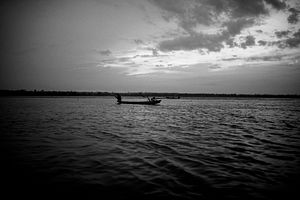Luc Forsyth and Gareth Bright have set out on a journey to follow the Mekong river from sea to source, The Diplomat will be sharing some of the stories they’ve found along the way. For more about the project, check out the whole series here.
Starting in the northern city of Steung Treng, we near the end of our exploration of Cambodia by investigating how people in the area rely on the Mekong and how this could be affected by the nearly completed dam.
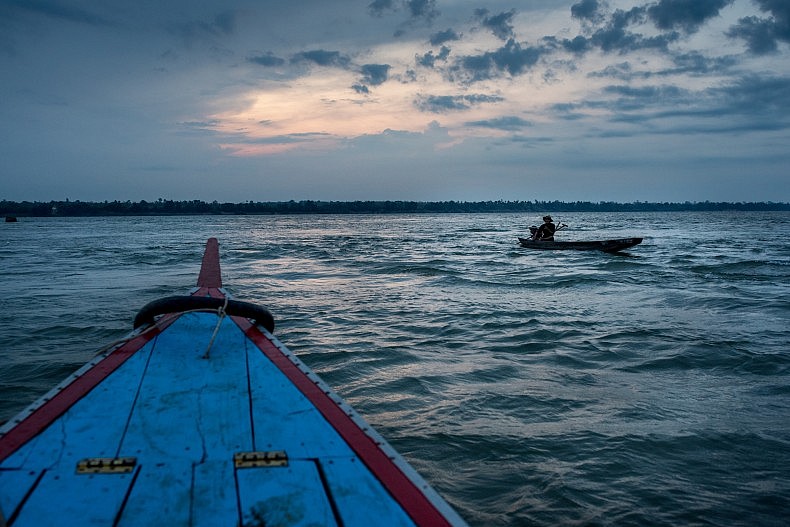
Thon Min, 65, fishes in the early morning on the Mekong River near the island of Koh Sralay. Photo by Luc Forsyth.
We heard the phone ring in the darkness (Nokia’s ubiquitous descending cadence adapted from Francisco Tárrega’s 1902 classical guitar composition) well before we could see the boat driver who answered it.
“Allo?” came the groggy voice. Though most Cambodians are notorious early risers, clearly 4 a.m. was not a time the man enjoyed.
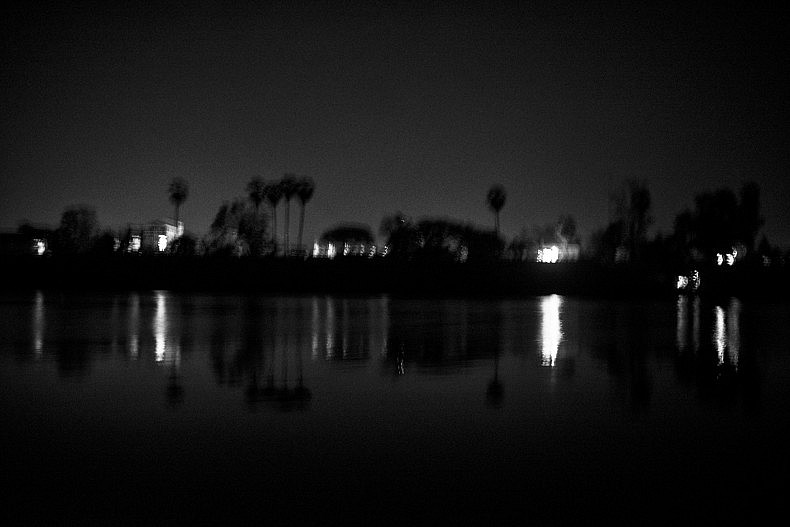
Pre-Sunrise view of Koh Sralay. Photo by Gareth Bright.
We had met him the previous afternoon while walking along Steung Treng’s riverfront promenade and chartered his boat on the spot to take us to the nearby island of Koh Sralay, where we hoped to gain insight into how the human-river interactions in sparsely populated northern Cambodia differed from those further south along the Mekong and Tonle Sap.
After we were settled onto the boat’s wooden benches, the driver stood in the shallow water along the river’s edge and spun the bow towards open water, clucking his concern about the lack of visibility around the high powered flashlight clenched between his teeth.
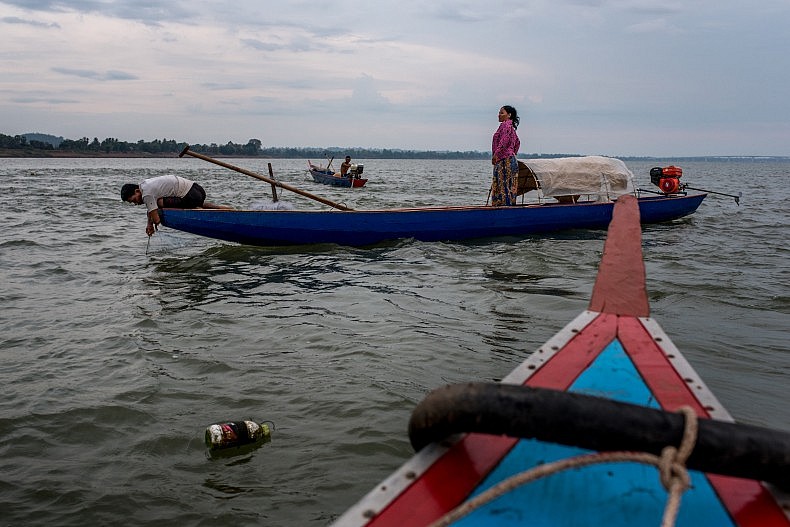
Residents of Koh Sralay are entirely reliant on the river for survival and will be heavily impacted by the Chinese-owned Sesan II dam, which will disrupt fish migrations and sediment flow. Photo by Luc Forsyth.
An hour later, the sun still not yet risen, the tip of the island appeared out of the gloom. The outlines of numerous fishing boats visible only for being slightly blacker than the water they floated upon. We were searching for one fisherman in particular, whose wife we had spoken to the day before as she sold catfish in Steung Treng’s market, but in the grey darkness it was nearly impossible to distinguish individual faces – let alone identify a man we had been told to seek out based solely on a name and a loose physical description that could have applied to nearly every fisherman on the river.
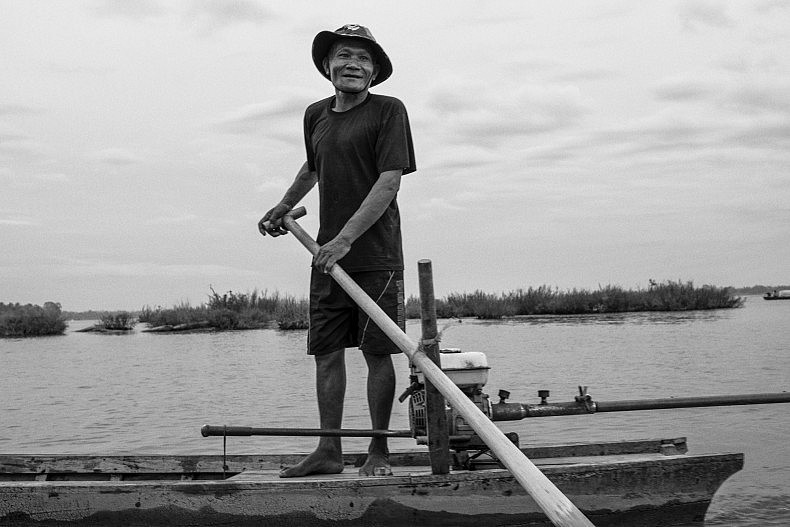
Thon Min, 65, fishes in the early morning on the Mekong River near the island of Koh Sralay. Photo by Gareth Bright.
“Thon Min?” As our translator called out the man’s name to each boat we passed, invariably they waved us further downriver while offering few specifics. When we eventually found him it was nearly 6 a.m. and his morning’s fishing was all but finished. Not long after, he headed for home.
“Only one fish today,” Thon told us as he tied his boat up to a thicket of mangrove trees. “People from upriver came last night and used electric fishing nets. Whenever they do this we catch nothing the next day. But this is still enough.”
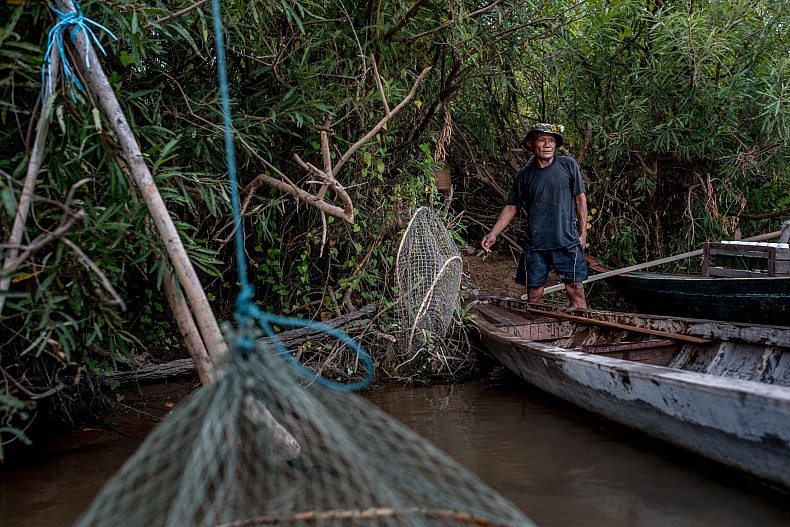
Thon Min, 65, hangs his fishing nets from trees along the banks of the Mekong river. When he catches enough fish, the surplus will be sold at a nearby market, while the remainder are kept alive until they are eaten. Photo by Luc Forsyth.
The Last Bastions of Sustainability
“Here we can feed the whole family without buying anything, other than spices and oil.” Thon told us as we sat cross legged on the floor of his large stilted home. “When we catch more fish than we can eat, we sell them at the market, and we produce enough rice and vegetables to feed our family.” Considering that Thon’s family counted 10 members, this was no small feat.
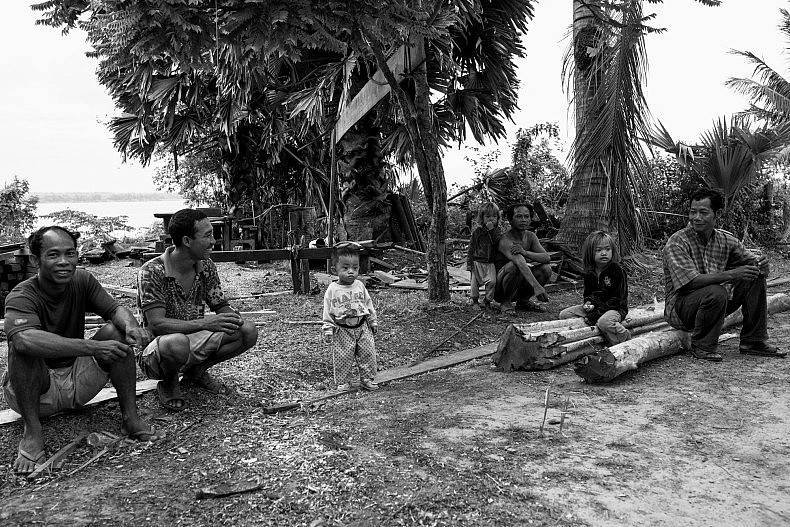
Residents of Koh Sralay. Families here are entirely reliant on the river for survial and will be heavily impacted by the Chinese-owned Sesan II dam, which will disrupt fish migrations and sediment flow. Photo by Gareth Bright.
From crop watering to protein intake to drinking water, virtually every aspect of Thon’s life was connected to the health of the Mekong and its nearby tributaries – and it was the first time in the 3 months since we began the project that we had talked to someone who didn’t report a drastic decrease in water quality. Compared to the dwindling resources and environmental degradation we had witnessed on the Tonle Sap Lake, or the extreme poverty we encountered in Phnom Penh’s Cham village, Koh Sralay seemed like a positive example of how the river had supported life in Southeast Asia for millennia.
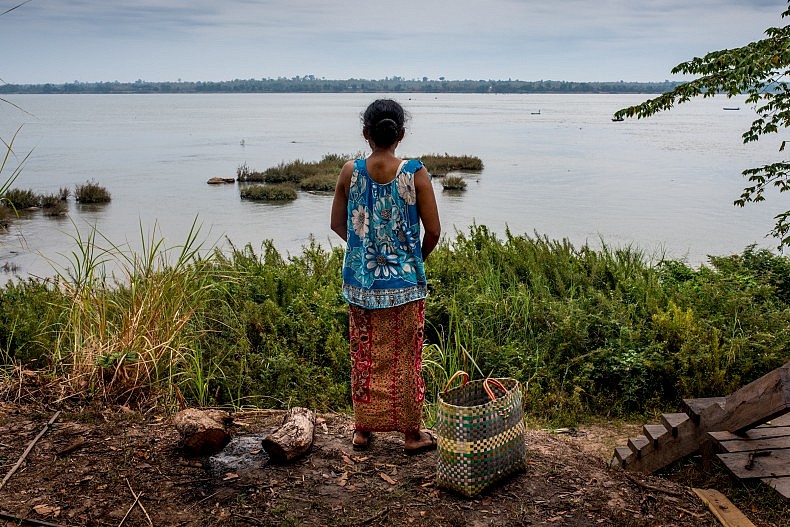
Kuch Hen, 45, looks out over the Mekong river. Her family supports itself entirely from the river, and will be heavily affected by the Chinese-owned Sesan II dam. Photo by Luc Forsyth.
“On the Tonle Sap there are too many people and too many fishermen,” Thon explained when we asked him why Koh Sralay was flourishing in comparison to the Tonle Sap. “This is bringing down the quality of the water and the numbers of fish. There they fish every day of the year, but here we follow the seasons.”
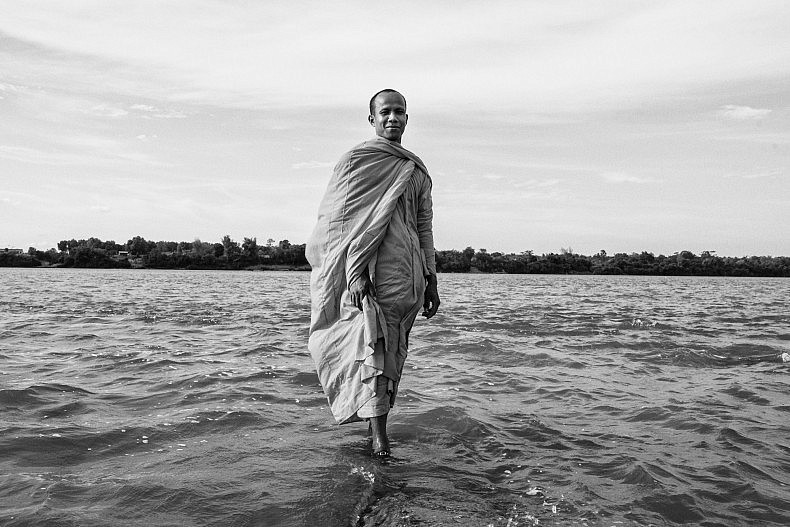
A Monks poses for a portrait in the water at the end of a pier extending into the Sekong river in the city of Steung Treng. Photo by Gareth Bright.
Following the seasons, Thon explained, meant that they fished only when the river was in the process of rising or falling with the coming and going of the monsoon rains – the times when fish were moving to or from their spawning grounds. During the rest of the year, they hung up their nets and turned to inland farming instead, giving fish stocks a period of respite. By contrast, fishermen on the Tonle Sap often set their nets multiple times a day, every day of the year.
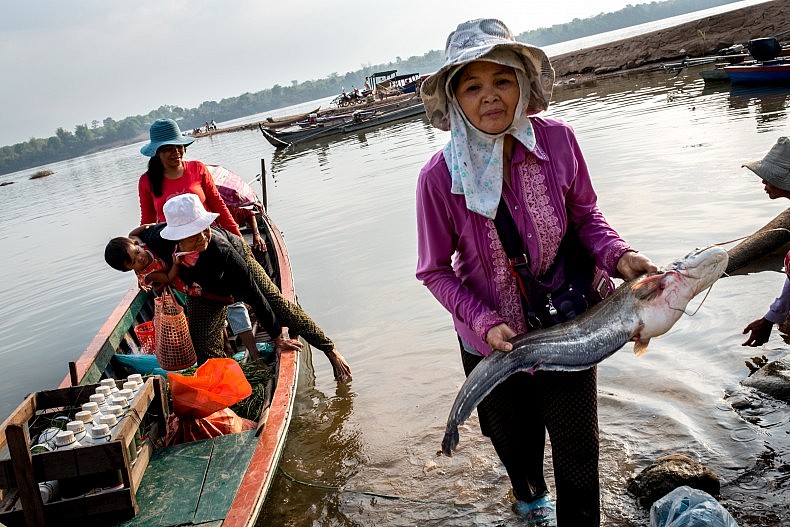
A fish vendor carries a catfish to shore in the city of Steung Treng. Photo by Luc Forsyth.
Though there were almost certainly examples of irresponsible river stewardship taking place (the clandestine raiding by upstream fishermen toting electrified nets Thon had mentioned, for example), in general this was a prosperous symbiotic relationship between civilization and the environment. But a threat loomed on the horizon, one with the potential to completely and irrevocably derail the lives of people like Thon.
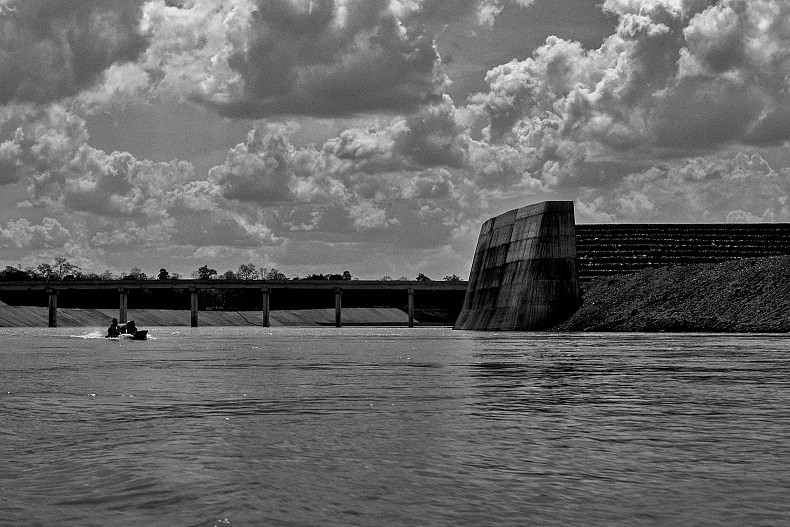
The construction site of the Sesan II dam. The Chinese-financed dam will block two major tributaries of the Mekong, displacing thousands, disrupting fish migrations, and inundating roughly 36 000 hectares of land. Photo by Gareth Bright.
Stopping the Flow
“We worry about the dam,” Thon told us before we left Koh Sralay. “If it breaks, a big wave will come and destroy this island, and I don’t know how it will affect our fishing.”
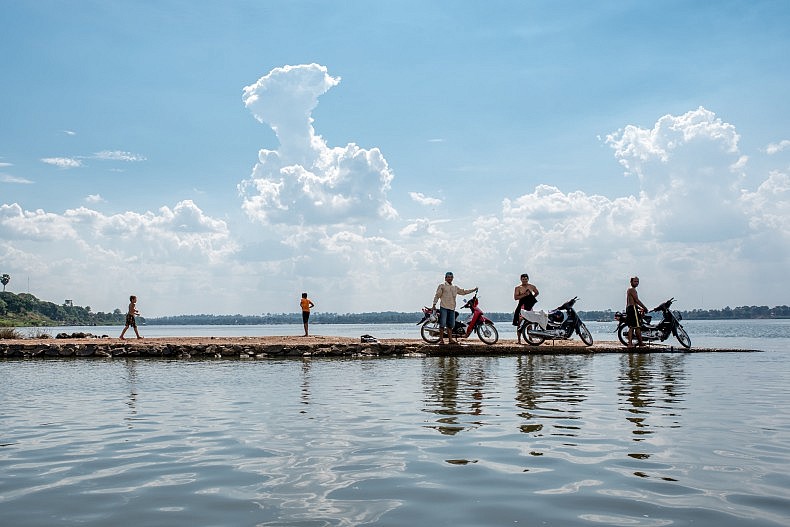
Locals gather along a pier extending into the Sekong River in the city of Steung Treng. The Sekong is a major tributary of the Mekong and will be heavily affected by the Sesan II dam. Photo by Luc Forsyth.
The Sesan II hydropower dam is arguably Cambodia’s most controversial environmental issue. When completed, the Chinese-owned dam will block two of the nation’s most important Mekong tributaries – the Sesan and Sekong rivers. The ensuing damages would be varied and devastating. Migrating fish would be unable to reach their breeding grounds; reduced sediment flow would disrupt the fertility of downriver farmland as well as increase erosion; a vast reservoir would displace thousands and inundate huge swaths of forest. An entire way of life could be lost, very possibly forever.
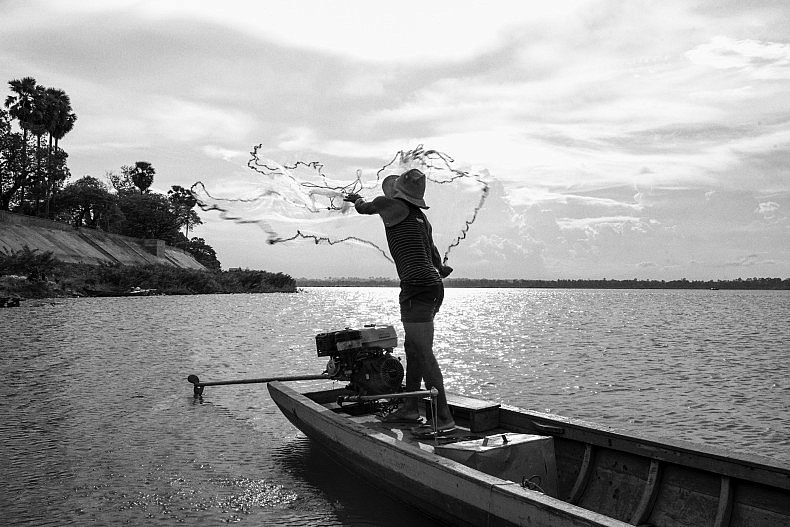
A fisherman flings out his net. Photo by Gareth Bright.
“The river is for life, for Cambodia, and for community identity,” Meach Mean told us over a bowl of fish soup. An independent environmental activist and the founder of the 3S Rivers Protection Network (a grassroots organization that mobilizes disparate villages to rally against the project), Meach is one of the most outspoken opponents of the dam. “Rivers create a lot of our culture [in Cambodia], including our annual boat festivals, the ancient belief in water spirits, Buddhist water blessings, and the national diet. If the dam is built it will stop our culture, not just fish.”
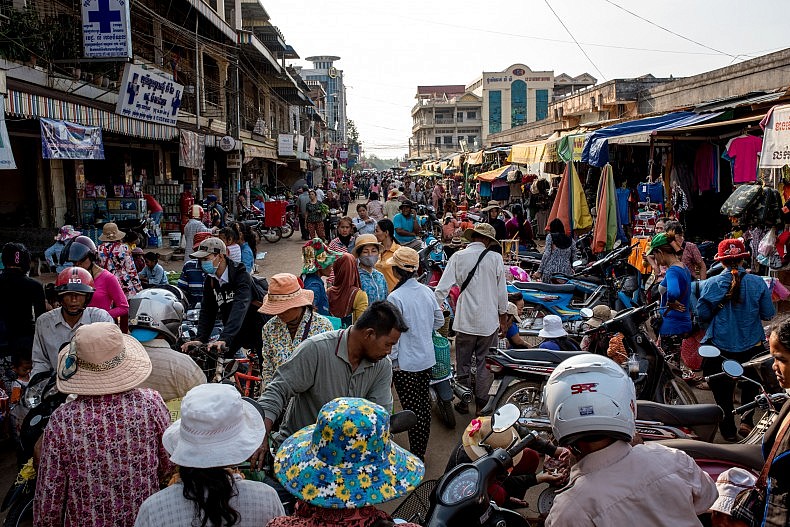
The main market in the riverside city of Steung Treng. Photo by Luc Forsyth.
Wanting to see the physical manifestation of the controversy, we asked Meach to take us the to the dam. With security checkpoints stationed along the roads leading to the construction site, we had to hire two small wooden fishing boats to circumvent the roadblocks. It was more than an hour’s journey against the river’s current, during which time we saw little evidence of development, save a few small fishing hamlets scattered amongst the tree lined banks. It was hard to imagine that something so destructive could be lurking in such an idyllic and remote place.
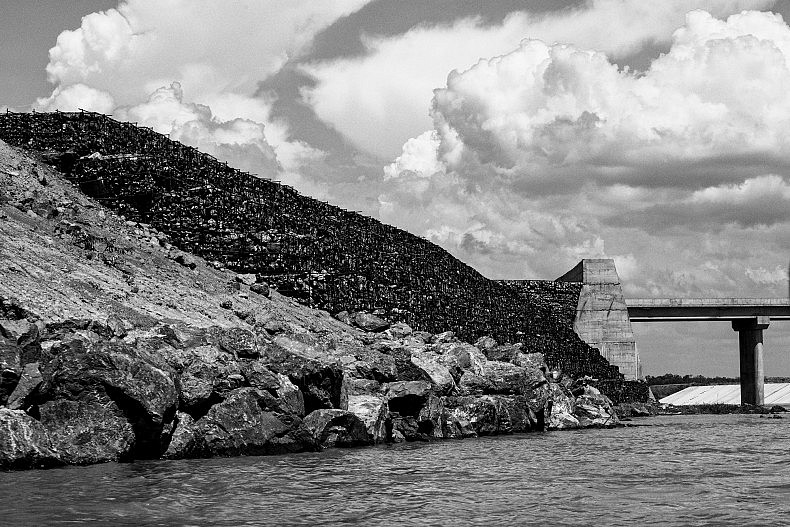
The construction site of the Sesan II dam. Photo by Gareth Bright.
“There,” Meach said as we rounded a bend. At first I couldn’t see what he was pointing at, but gradually the shapes of industrial cranes emerged on the skyline, towering over a wall of concrete. Initially it seemed like the river was completely blocked, but as we drew nearer we could see that a small channel remained open. As our boats made for this gap, I asked Meach what would happen if we were confronted by security: “What do you think? We leave very quickly,” was his simple response.
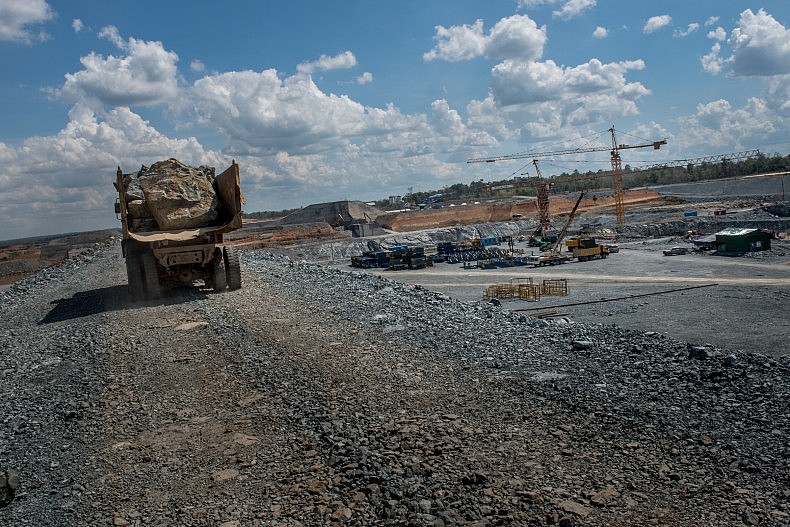
The construction site of the Sesan II dam. Photo by Luc Forsyth.
The boats dropped us behind the dam in order to minimize the chances of being spotted by construction personnel before we had a chance to see the site. After a sweaty scramble up a loose stone slope, we found ourselves standing on a gravel road, the entire building site in front of us. The immensity of the project was hard to process, stretching beyond what our peripheral vision could take in. For a moment we just stood and stared, but Meach quietly urged us to get our pictures as quickly as possible as a security patrol could be along any minute. Not wanting a confrontation we heeded his advice, snapping pictures furiously. When a dump truck rumbled past a few minutes later and the driver immediately began speaking into his radio, we knew it was time to leave.
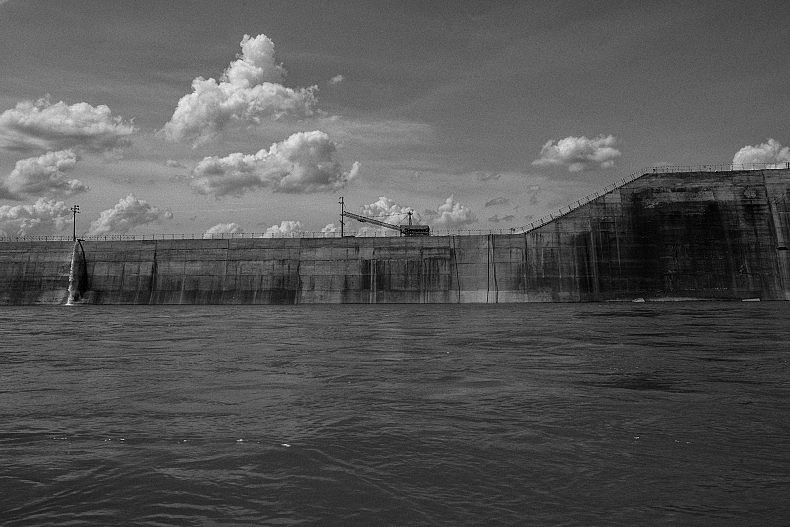
The construction site of the Sesan II dam. Photo by Gareth Bright.
We skidded back down the rocky embankment and boarded our boats for the drive back. “How did that make you feel?” Meach asked. Overwhelmed, intimidated, and worried were all words that entered our minds. Having read a great deal about the ecological dangers of damming the Mekong and its tributaries had prepared us intellectually, but the reality of seeing such a massive structure nearly blocking an entire waterway was another matter.
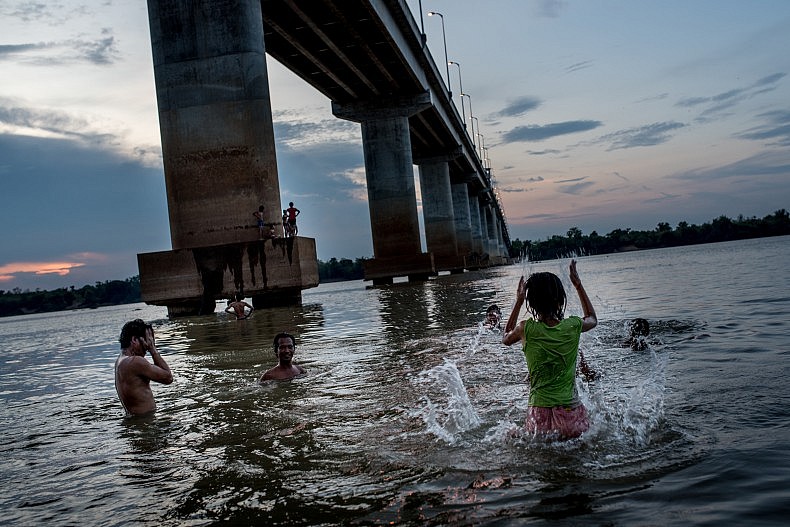
People play and relax in the water under the pilings of a bridge over the Sekong river in the city of Steung Treng. Photo by Luc Forsyth.
We were mostly quiet and reflective on the hour long boat back towards Steung Treng. The following day we were headed to a village of indigenous Bunong people, whose homes sat directly in the path of the dam’s proposed reservoir and we wondered if we had just seen the future destroyer of people we hadn’t yet met.
This piece originally appeared at A River’s Tail.













